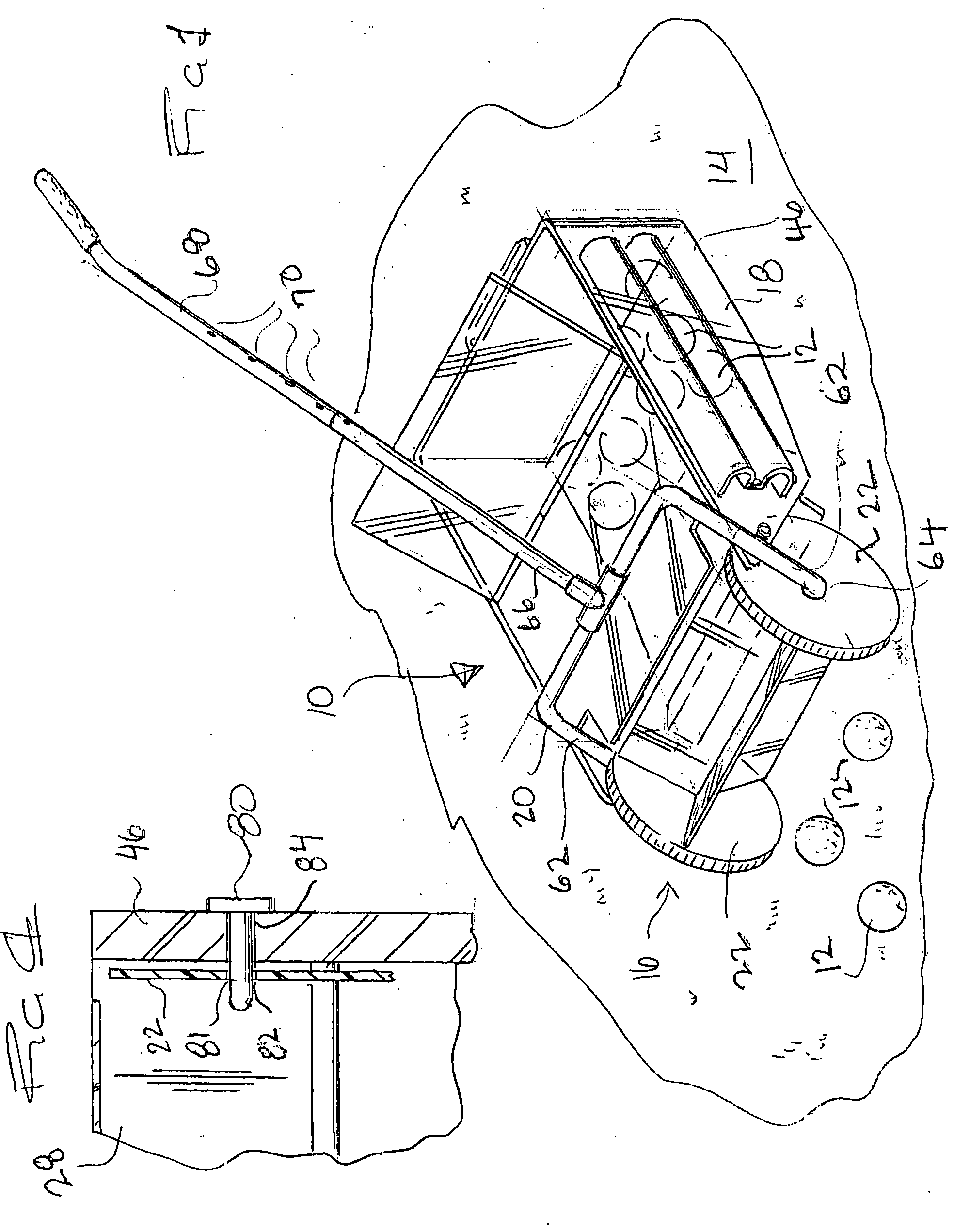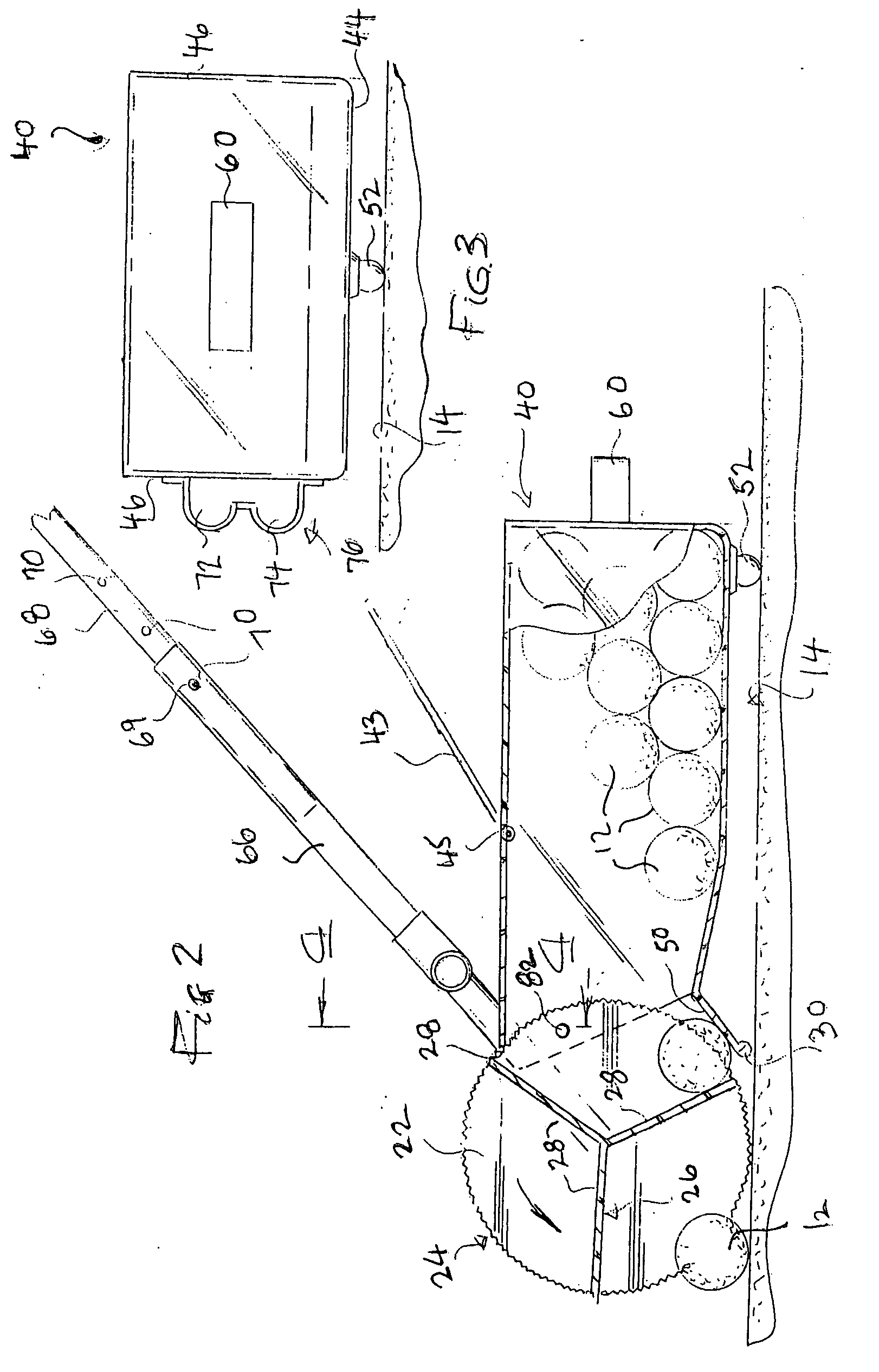Tennis ball collection, dispensing, and transport apparatus
a technology for tennis balls and transport devices, which is applied in the field of tennis ball collection, dispensing and transporting equipment, can solve the problems of tennis ball spillage, unsatisfactory for many players, and difficult to carry, so as to prevent unintended spillage of tennis balls, convenient portability, and convenient transportation
- Summary
- Abstract
- Description
- Claims
- Application Information
AI Technical Summary
Benefits of technology
Problems solved by technology
Method used
Image
Examples
Embodiment Construction
[0027] Referring now to the drawings wherein like numerals designate like and corresponding parts throughout the several views, and according to a first embodiment of the present invention, FIG. 1 shows a perspective view of the preferred embodiment of the tennis ball collector, dispenser, and transporter 10 of the present invention, hereinafter referred to as “collector”. The collector 10 is sized and configured to receive a plurality of tennis balls 12 (or other game balls having a generally spherical shape for which the collector is sized, shaped and configured to receive as the skilled artisan will appreciate) randomly placed on a surface 14, such as the playing surface of a tennis court or other sport court, practice court, or the like. Collector 10 includes a sweeper apparatus 16 for sweeping the balls into a ball collector hopper 18. The collector 10 is manipulated at least during ball sweeping / collection by a compound handle 20.
[0028] Sweeper apparatus 16 includes a pair of...
PUM
 Login to View More
Login to View More Abstract
Description
Claims
Application Information
 Login to View More
Login to View More - R&D
- Intellectual Property
- Life Sciences
- Materials
- Tech Scout
- Unparalleled Data Quality
- Higher Quality Content
- 60% Fewer Hallucinations
Browse by: Latest US Patents, China's latest patents, Technical Efficacy Thesaurus, Application Domain, Technology Topic, Popular Technical Reports.
© 2025 PatSnap. All rights reserved.Legal|Privacy policy|Modern Slavery Act Transparency Statement|Sitemap|About US| Contact US: help@patsnap.com



